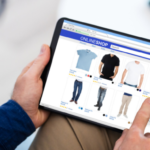At the recent Mi9 Synergy User Conference, I had the opportunity to lead a panel discussing omnichannel success. Surprisingly, despite vast growth in the ecommerce world and the rising growth of mobile, many retailers still struggle to find success in implementing strategies fulfilling on this retail buzzword.
To kick off the conversation I asked: In addition to having the right systems in place, what other components are required to make your omnichannel initiative successful? There is simply no question that your systems are important, but success will come from the strategies behind how you use them. For success, you must consider:
Consistency Across Channels
First, a company must have consistent messages across all sales channels. What you do online, you must be able to do in a store. For example, the returns and exchanges policies for items bought in a store must also match the policies for purchases made online. And, coupons must be valid both in store and online, rather than only being good on one platform or the other. There must be consistency within the brand and among sales channels because that’s how customers today see you, as one consistent brand no matter the channel.
The processes within an organization must also be streamlined and consistent. Understanding and defining your processes will help to manage the quickly changing customer journey that pivots and redirects quickly. So, no matter whether an item reaches the customer through a warehouse, fulfillment center, or a store, there must be processes in place that can make the purchasing and returning process easy for the customer.
Internal processes also must exist to handle the tracking of inventory, so that returns and exchanges are accounted with an accurate record of all availability within the organization. Each organization must think through all the processes that are required to offer a seamless and un-siloed customer experience.
Understanding and Utilizing Customer Data
Data is becoming increasingly important in the delivery of optimum customer experiences. Data on each customer should be collected throughout the customer’s lifecycle with an organization, in order to learn his or her preferences. By analyzing this data and using it in real-time when interacting with the customer, organizations can begin to deliver truly personalized experiences. In order to best leverage data, it needs to be clean. For example, customers who share the same first and last name should still be easily identifiable through other markers such as their email addresses.
By acquiring and analyzing data about customers during their interactions with a brand, organizations can begin to understand how the customer’s journey impacts key omnichannel strategies and tactics in comparison to the identified customer journey
Brand new retailers can define their customer’s journey from the very beginning, selecting systems based on this ideal path. A good way to start figuring this out is by documenting the typical customer journey from beginning to end, with different pathways if the customer is purchasing online, in a store, using gift cards, or returning items. It’s imperative for you to understand the importance of the multi-directional customer journey, as it changes as quickly as customer preferences change. A successful retailer will be prepared for as many of these scenarios as possible.
Contact us to discover how Sophelle can help your business reach omnichannel success and create optimum customer experiences.




